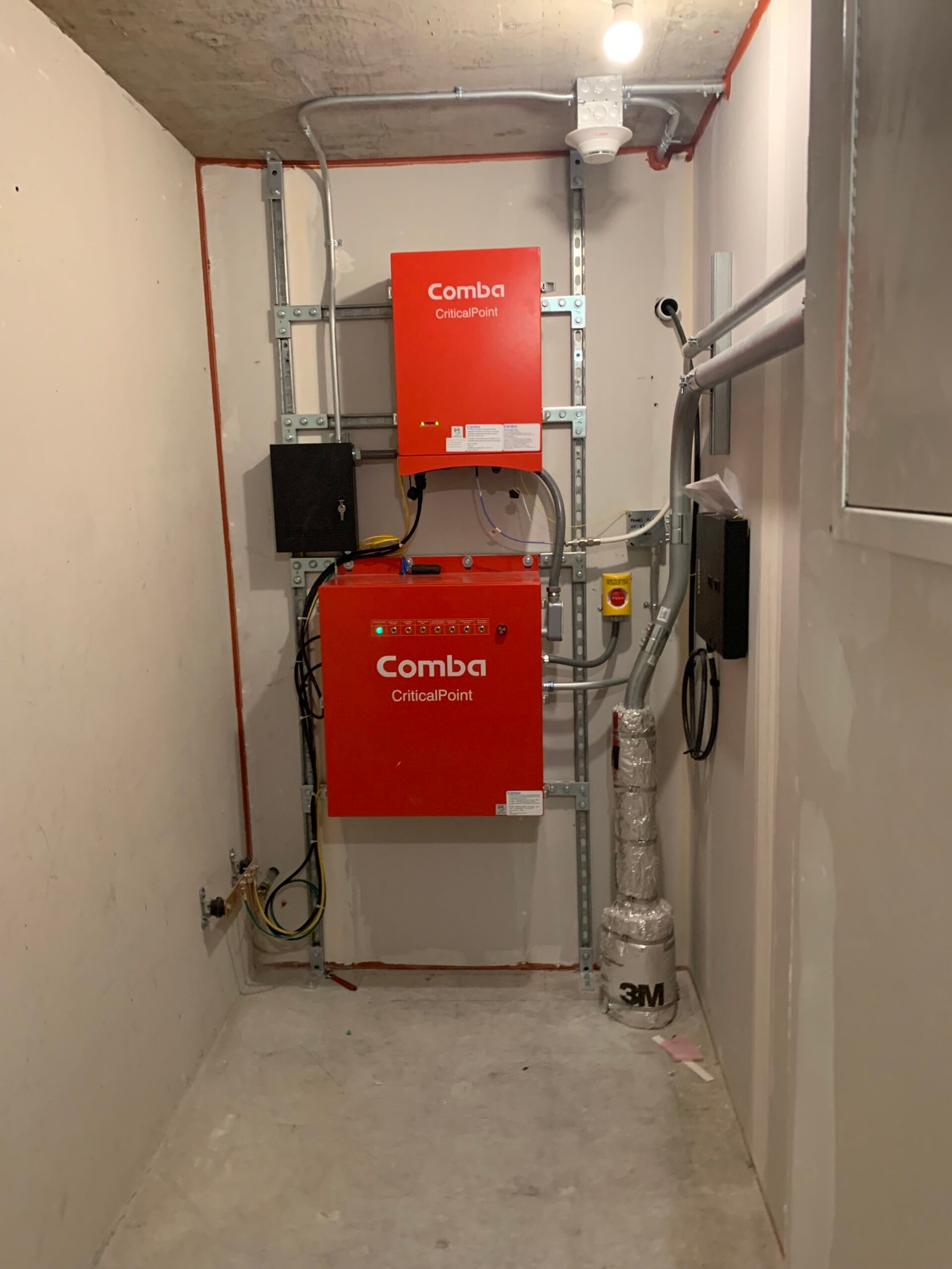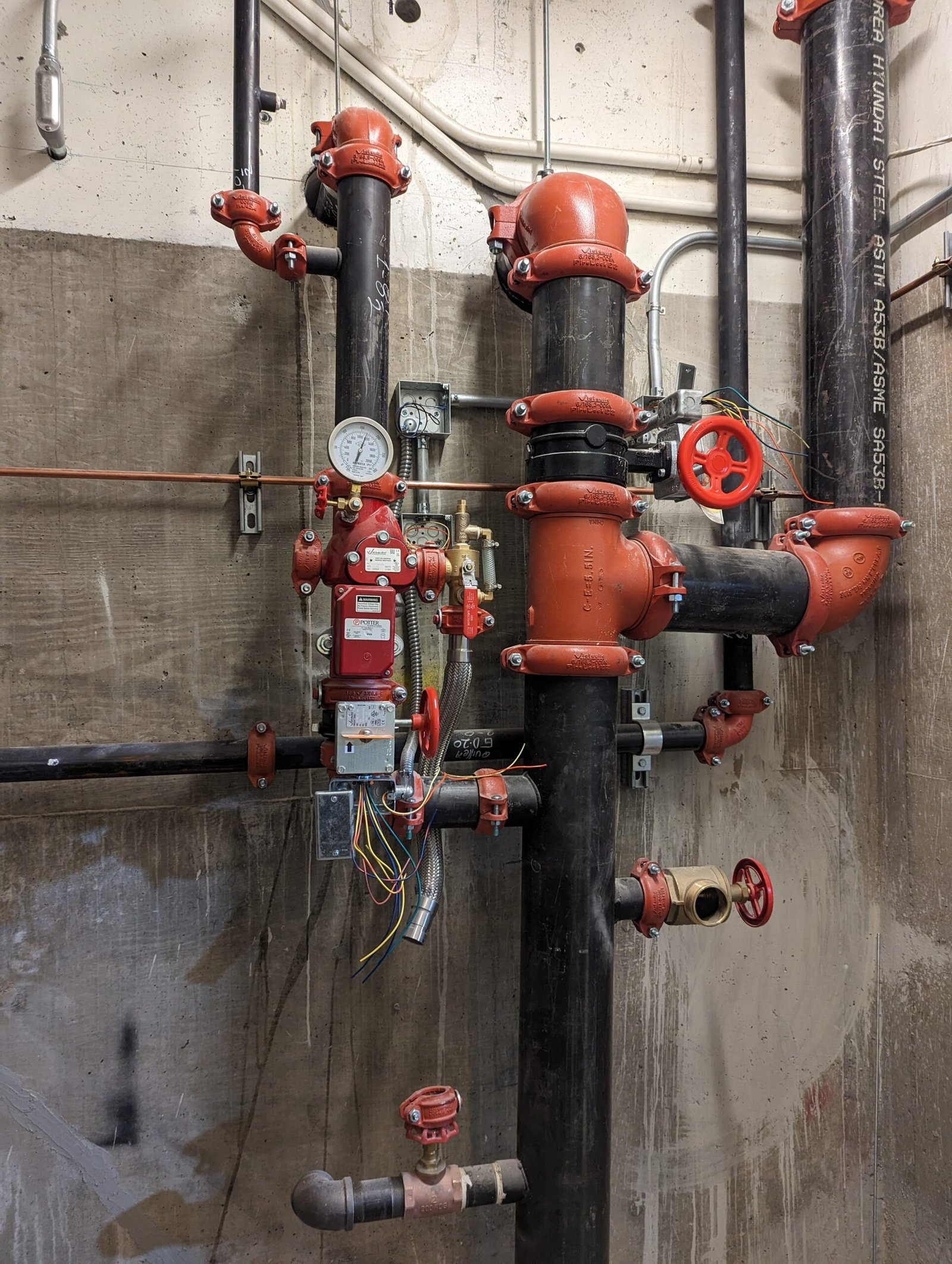Often, electricians will install a 2″ conduit from the donor antenna to the bi-directional amplifier (BDA). A BDA is a device that boosts radio frequency (RF) signals, all Emergency Responder Communication Coverage Systems (ERRCS) use a BDA. A communication cable, either coaxial or fiber optic is run inside the 2″ conduit and connects the donor antenna to the BDA.
On large college campuses an alternate method is sometimes used to get public safety radio signals to a BDA. The building where I am currently installing an ERRCS does not have a donor antenna on the roof. In lieu of a donor antenna, another BDA, known as a “Master” BDA, provides the radio signal. This “Master” BDA, is located in a separate building and receives a radio signal from a donor antenna.
The “Master” BDA sends the radio signal to the “Remote” BDA, via a fiber optic cable between the two separate buildings.

The location where the “Remote” BDA is installed becomes known as the ERCCS head-end; which is just saying that this is the equipment/room/location that receives the communication signal for distribution throughout the building.
From the “Remote” BDA a cable riser runs up the building. This riser makes up the backbone of the ERCCS and is required to have a level 2 pathway survivability rating, to achieve this level of survivability we worked with framers to build a 2-hour rated shaft around the ERRCS riser.
The riser runs vertically up the building with horizontal branches of coaxial “feeders” connecting to the riser on each floor via passsive equipment called “couplers.”



